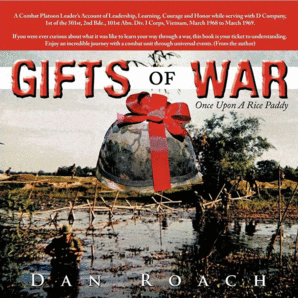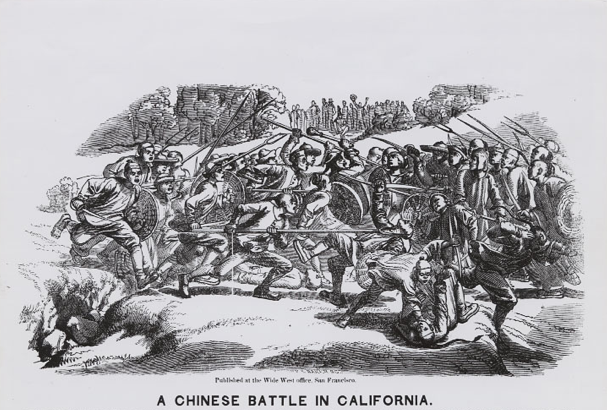This is part two of my series on General Lawton’s use of civilian scouts during war time. Apache scouts and his civilian scout Tom Horn were the group that Lawton depended upon for relentless pursuit against Geronimo and his war party. It was that dogged pursuit that eventually forced Geronimo to give up, and that is certainly a significant accomplishment. They also accomplished this mission within the borders of another country. Lawton could not have done this without his scouts.
So fast forward to the Philippine-American War, and General Lawton’s involvement there. Just imagine this. Some civilian from the US comes over by boat to the Philippines to fight. This civilian was a scout from the Indian War years, and he wanted to offer his services to the war effort there. And after some convincing, General Lawton eventually hires this guy named William Young to lead a team of Army Soldiers as scouts. They were called Young’s Scouts.
I imagine that Lawton’s experience with scouts from his past wars, are what influenced him to take a risk with a civilian offering his services for such a thing in this war.
Not only that, but these scouts were actively engaged in combat and did very well. A civilian scout leading soldiers on offensive operations or ‘search and destroy’ missions…..Think about that for a second? And Young died from a wound he received in combat. Did I mention that eleven members of this unit were recipients of the Medal of Honor! Most of them received their award during a battle that Young led and was wounded in, and yet Young did not receive the MoH.
This unit was also quite the bunch. They were definitely ‘citizen soldiers’ if you know what I mean. Here is the quote that cracked me up:
“all were nonconformists with more than one court-martial on their record.”
These guys were certainly trouble makers, and in more ways than one. From what I was reading in other sources, officers of other units were jealous and miffed at these guys, because they definitely had attitude. But Young was able to take these guys and form them into an effective unit, and prove their worth. They were also chosen because of their shooting abilities. Here is a sample of what I am talking about.
As a small patrol consisting of Young, Birkhimer, Frank L. Anders (Fargo), James W. McIntyre (Fargo), Willis H. Downs (Jamestown), and two other scouts approached San Miguel, they discovered a trench with 300 insurgents guarding the bridge leading to the city.
When the scouts were spotted, they decided to rush the trench. Joined by six other scouts including Patrick Hussey and Frank Summerfield from Dickinson and Gotfred Jensen from Devils Lake, they “charged over a distance of 150 yards and completely routed the enemy.”
After Young was wounded, Anders rallied the scouts and led them into San Miguel where they fought the enemy for four hours until relief arrived. This city of 20,000 was taken by a small force of a dozen men.
Now that is cool, and this particular battle is what gained the unit so much attention. This unit also participated in numerous hit and run operations and definitely did a number on the enemy. It just goes to show what small units can accomplish, if they have the right leadership and skill sets.
Unfortunately there is not a lot of information about Young. I suspect that he was pretty seasoned during the Indian Wars, and was part of that massive contractor civilian scout force that the military called upon during that conflict. He reminds me of guys like Frederick Russell Burnham, who went on to apply his Indian Wars war fighting and tracking skills to the battlefields of places like Africa.
I did find one book about Young’s Scouts, but it didn’t have a lot about Young himself. But it is a cool little resource none the less.
If anyone has anything else to add to this history of William Young and the Young Scouts, I would love to hear it. At least his memory and deeds will be noted here on the blog. It will also be another example of how America used to define what was ‘inherently governmental’. Because in this little piece of history and war, civilians were a strategic asset used to defeat the enemy. –Matt

The battle at the bridge outside of San Miguel.
Young’s Scouts
(from Wikipedia)
Young’s Scouts was a select group of United States Army soldiers during the Philippine-American War organized under a Vermont civilian named William H. Young. Because of his previous experience as a soldier and soldier of fortune and his demonstrated coolness under fire, Young came to the notice of General Henry W. Lawton, who hired Young as his Chief Scout during Lawton’s Northern Campaign. Young’s Scouts acted as an advance guard and engaged in search and destroy missions. The exploits and valor of Young’s Scouts soon brought them to the attention of the American public.
Members of Young’s Scouts came from several units in Lawton’s command, including the 1st North Dakota Volunteers, the 2nd Oregon Volunteers, and the 4th U.S. Cavalry (dismounted). Although the original unit was composed of 25 men, Scouts came and went as casualties and sickness took their toll. In two different engagements a number of Scouts were recommended for the Medal of Honor, which at the time was the only Army award for valor. On May 14, 1899, William Young was wounded in the knee in an engagement at San Miguel de Mayumo with what was described as a minor wound. He was conveyed to the 1st Reserve Hospital in Manila with a request by Lawton that he receive the best of care. Ironically, although the initial assessment of Young’s wound was that he would probably end up with nothing more serious than a stiff knee, he died a few days later, presumably of tetanus.
Young’s Scouts continued to operate under several different officers for the remainder of Lawton’s Northern Campaign.
Link to wikipedia here.
—————————————————————
North Dakotans played role in ‘Young’s Scouts’
By CURT ERIKSMOEN
December 5, 2010
Of the 17 Medal of Honor recipients who enlisted or were recruited into the military in North Dakota, nine of them were recommended for the medal because of their action in a span of only four days.
All nine were part of a select group called “Young’s Scouts,” a small unit that terrorized the Filipino insurgents, during the Philippine Insurrection, following the Spanish-American War.
In late April 1899, Gen. Henry W. Lawton asked William H. Young to put together a detachment of “25 specially qualified enlisted men” to travel one-half day ahead of the main column to locate insurgent forces and destroy the insurgents’ food and supplies.
Young’s Scouts had been designated as sharpshooters, but they were not your typical soldiers — “all were nonconformists with more than one court-martial on their record.”
(more…)




